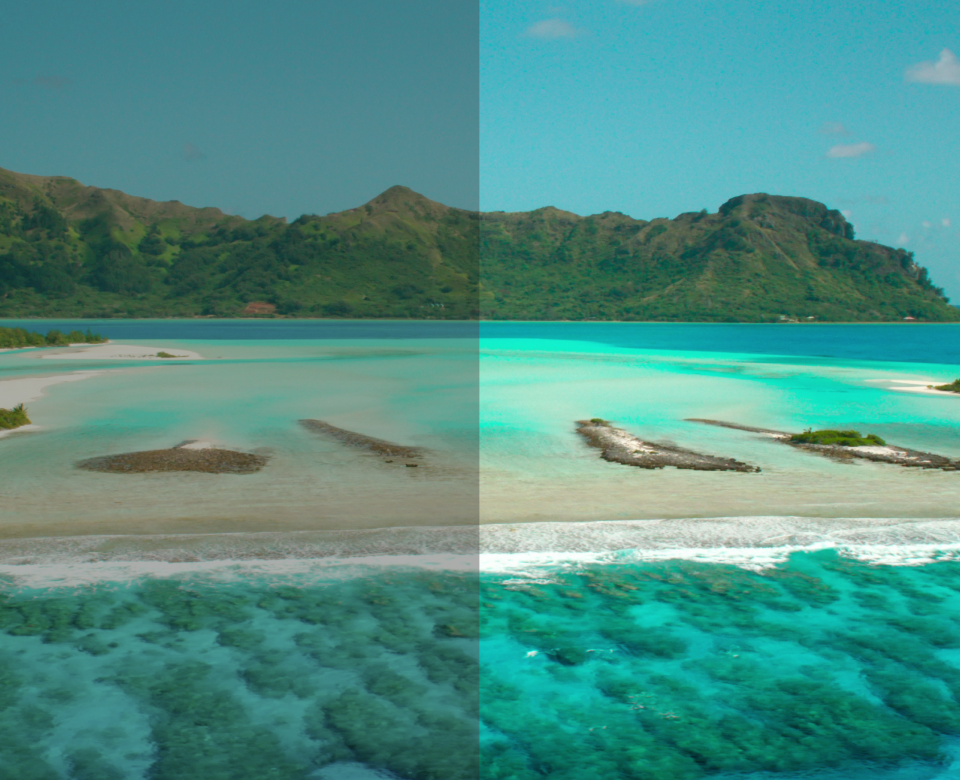
HDR for All: How to choose your HDR converter? by Nicolas Dallery
The HDR conversion and its usefulness
Although HDR productions and transmissions are increasingly common, there are still many questions about how to manage the HDR signal throughout the video processing chain, particularly when SDR content or equipment (HD or UHD) must coexist with HDR content or equipment (UHD). This is why different SDR-to-HDR conversion solutions (and vice versa) are now available on the market and can be used at different steps of the video pipeline (CCU output of a camera, video mixer, before or after a router or after the play-out). Most of these solutions operate in real-time with more or less latency, which allows them to be used for live productions.
There are two different conversion technologies: Conversions based on the use of static LUTs, and dynamic/adaptive conversions. In some cases, these two types of conversions make use of metadata.
Static conversions
Static LUTs use a fixed conversion scheme. They are suitable when the video content type is relatively static, and particularly when the content to be converted does not undergo any large changes in brightness. Such tools make it possible to achieve an acceptable result in most cases. However, they may generate a result that is far from optimal when light conditions vary during a production or when a given frame incorporates both dark areas and very bright ones. Additionally, static LUTs are not able to fully take advantage of the extended dynamic range and contrast offered by HDR.
Dynamic conversions
Dynamic and adaptive conversions make it possible to achieve an exceptional conversion. They analyze the characteristics of each video frame and apply the most appropriate correction to each one of them. The conversion process is automatic and requires no live adjustments or reconfigurations. These techniques respect the artists’ intent and achieve excellent performance for any type of image. They allow the full benefit of the screen’s dynamic range and produce an HDR signal close to what would be achieved through native HDR. Dynamic and adaptive conversion solutions mean no compromise.
What about metadata?
Some of those conversions, whether static LUT or dynamic, incorporate the use of metadata into their conversion mechanism. That metadata contains the conversion parameters associated with each image or with the shot (camera settings). It must be transported along with the image, which creates a heavy burden on the system solution, with imposing constraints between equipment.
The importance of the round-trip
Additionally, with respect to cascaded conversions, another important concept in the field of SDR-to-HDR and HDR-to-SDR conversions is the round-trip. This involves using a conversion solution that makes it possible to come back to the original signal (at least from a perceptual standpoint) after successive conversions. This feature is very important in live production workflows because it helps facilitate the alignment of different camera types (SDR and HDR) and ensures that the mixer’s output signal, once converted to SDR, is the same as the picture that the video engineer verified on their SDR monitor at the time of capture. Furthermore, live manual adjustment of conversion parameters makes round trips impossible to guarantee in the absence of metadata.

b<>com *Sublima*, the all-road HDR converter
b<>com is the first organization to have introduced an adaptive, dynamic real-time conversion solution onto the market. Beginning in 2016, b<>com addressed the issue of tone expansion (SDR to HDR), followed by the more complex issue of tone mapping (HDR to SDR). These technologies were rewarded with a NAB Innovation Award in 2017 and a NAB Product of the Year Award in 2019.
b<>com HDR converter offers all the benefits of real-time dynamic and adaptive conversion techniques, without any need for manual adjustment. It guarantees an optimal conversion regardless of the video content. Even though the conversions dynamically adapt to the content characteristics, they do not require the use of metadata, yet are still able to guarantee a perfect round trip.
These conversion algorithms have been optimized and perfected with the help of leading players in the field of HDR. They are available in the form of a software library or FPGA netlist. b<>com provides these solutions to leaders in the video market.
Interested in a demo? Please contact us by filling up this form:

